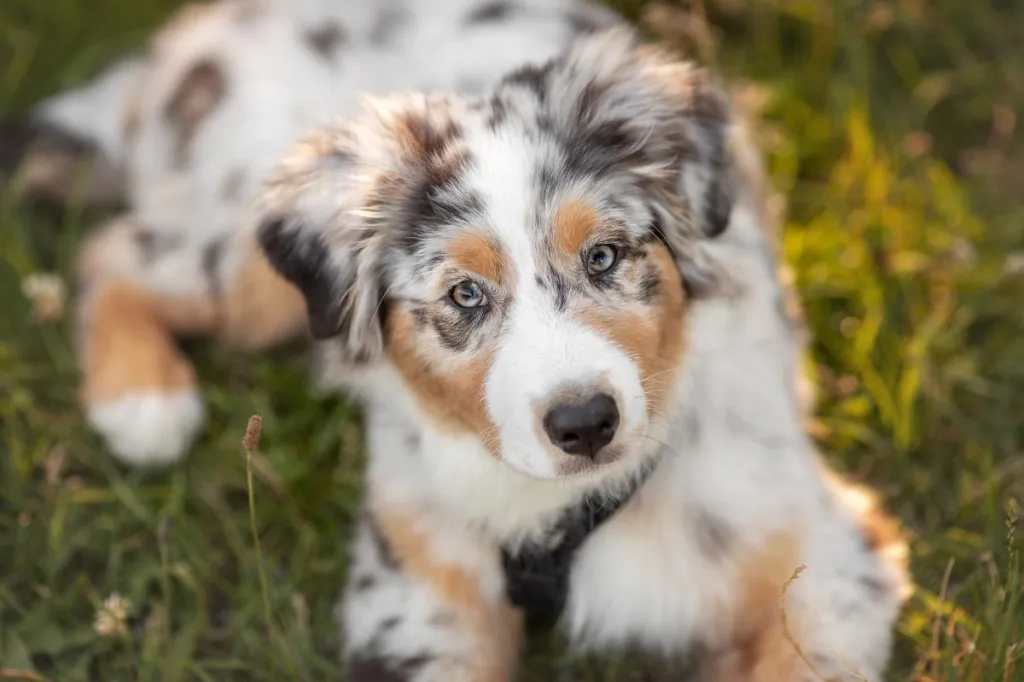With their spunky attitudes and fluffy coats, it’s no wonder that so many people consider getting an Australian Shepherd puppy. This active breed may be adorable, but what do you know about Australian Shepherd puppies? Are you sure you’re prepared to bring one into your home and family? Before you go to your local rescue or shelter and adopt a cute Aussie pup, here are a few important things you need to know about Australian Shepherd puppies.
Australian Shepherd puppies thrive when properly trained
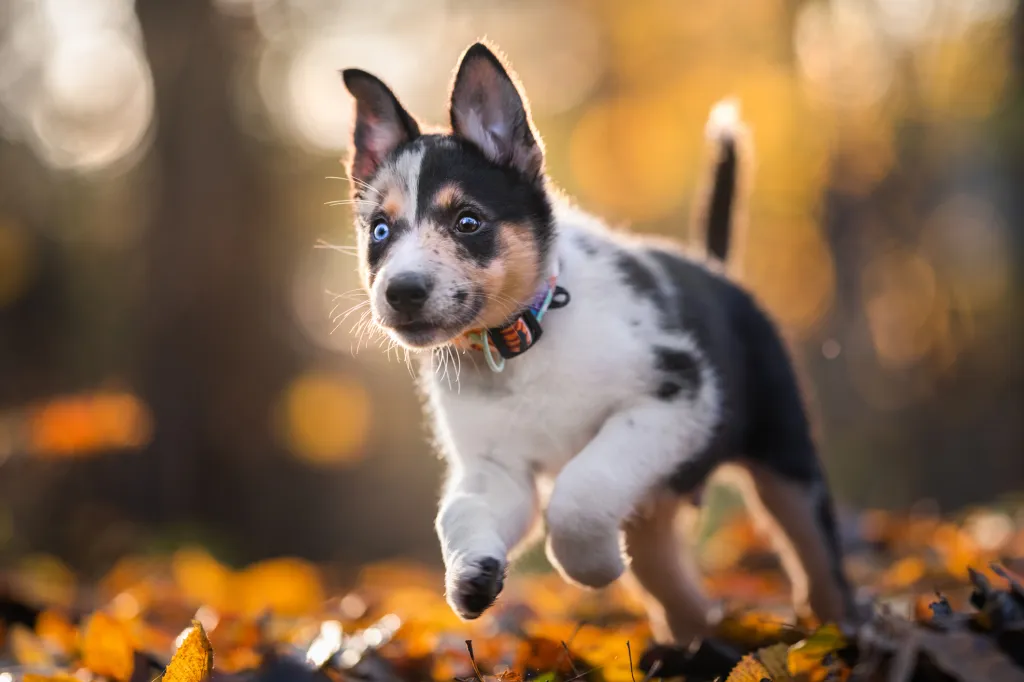
Australian Shepherds are very intelligent. They’re also a herding breed. Given that they were bred to do work, you can expect an Australian Shepherd puppy to have a lot of energy. These traits make them ideal obedience students.
Australian Shepherd puppies normally take very quickly to training. While teaching them, it’s not just important to teach them the basic commands like sit, stay, and lie down; you need to teach them limits as well.
This intelligent breed always finds a problem to a solution. For example, if your Australian Shepherd puppy sees something on the other side of the backyard fence that they want to chase, they will find a way over, under, or even through the fence.
Training won’t just help keep your Australian Shepherd puppy well-behaved, either. It will help keep them mentally stimulated and prevent boredom. That will go a long way in curbing destructive behaviors when they try to make their own fun.
They need a lot of exercise
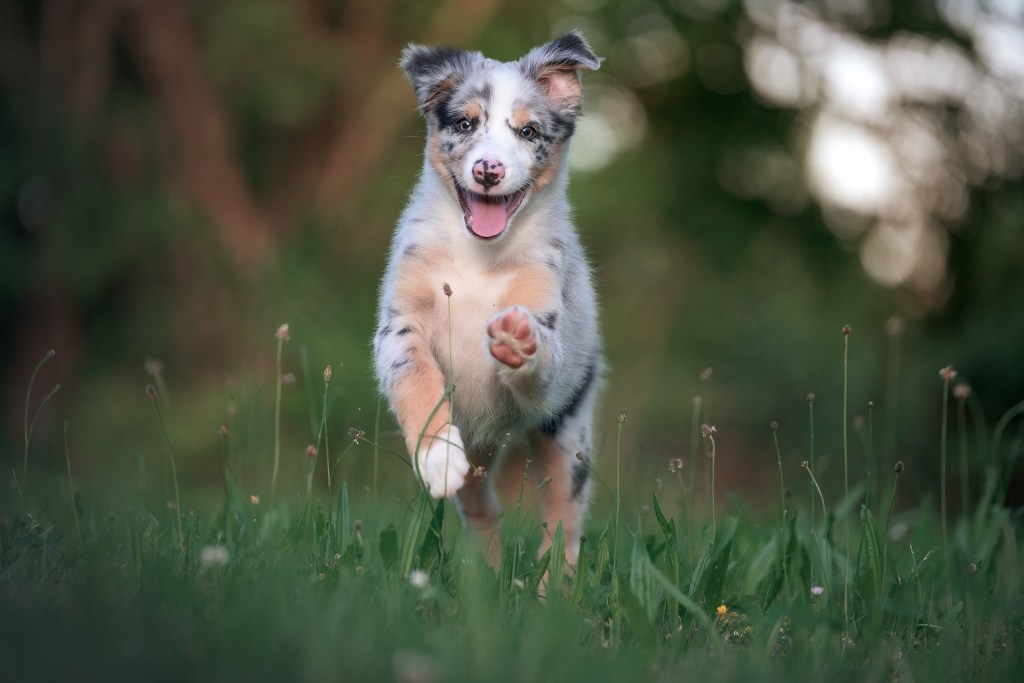
Since Australian Shepherds were bred to be working dogs, they normally have a rather lean frame. If your Australian Puppy isn’t getting enough exercise, however, they can very easily become overweight.
To keep your Australian Shepherd puppy healthy and trim, you’ll need to make sure they’re getting enough daily exercise.
A daily walk around the block won’t cut it for this breed. In order to stay healthy, many Australian Shepherd enthusiasts suggest having a yard where your puppy can play freely for an hour or two a day.
Of course, just because you don’t have a backyard doesn’t mean you can’t get an Australian Shepherd puppy. Long hikes and walks can make up for a lack of space. You can even train your Australian Shepherd puppy to be your jogging companion.
They tend to get attached
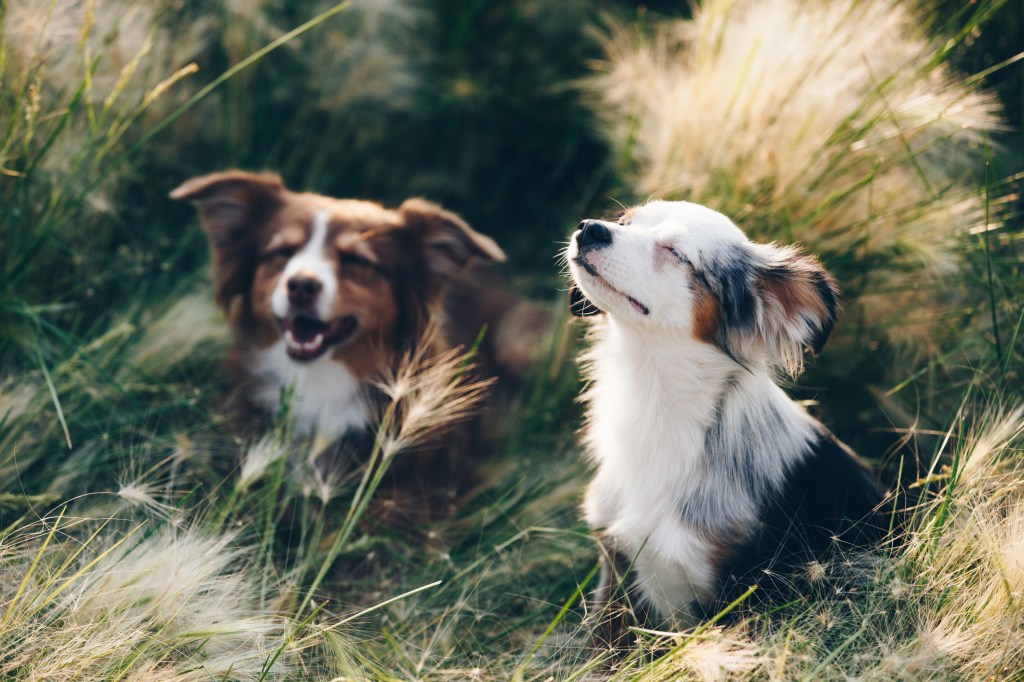
Australian Shepherd puppies love to please, which is why they do so well with obedience training. It’s also why they quickly become attached at the hip of their favorite humans. Many Aussie parents say that their puppies love to be as close to them as possible.
If you’d like to adopt a dog you can cuddle with, you’re in luck with the Australian Shepherd. Just be sure that your Australian Shepherd puppy’s desire to be near you doesn’t turn into a need, like separation anxiety.
They go by many names
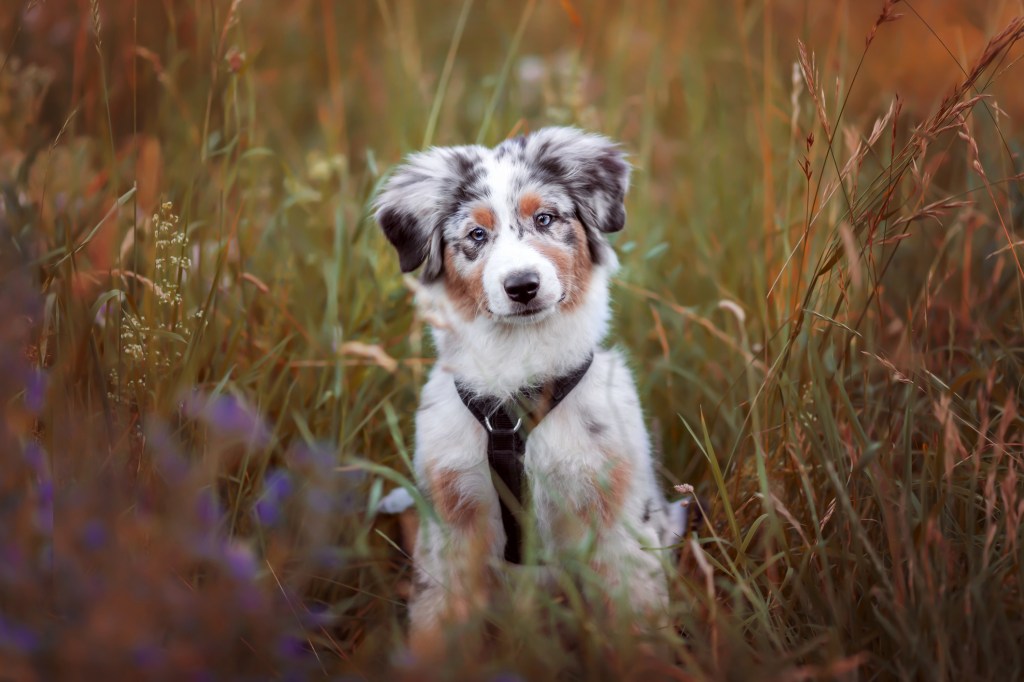
The name Australian Shepherd is fairly misleading, as the breed isn’t even from Australia. According to the American Kennel Club, the breed likely came from the Basque region of Spain. In the early 1800s, many Basques left their home and traveled to Australia, bringing their herding dogs with them.
After some selective crossbreeding with English imports like the Border Collie, the Australian Shepherd breed as we know it today was created.
When these dogs were brought over to California from Australia, they were mistakenly given the title of “Australian.”
This isn’t the breed’s only moniker, either. The Australian Shepherd goes by many names. They have previously been called Spanish Shepherds, Pastor Dogs, Bob-Tails, California Shepherds, Blue Heelers, and Mexican Shepherds.
They are prone to heterochromia
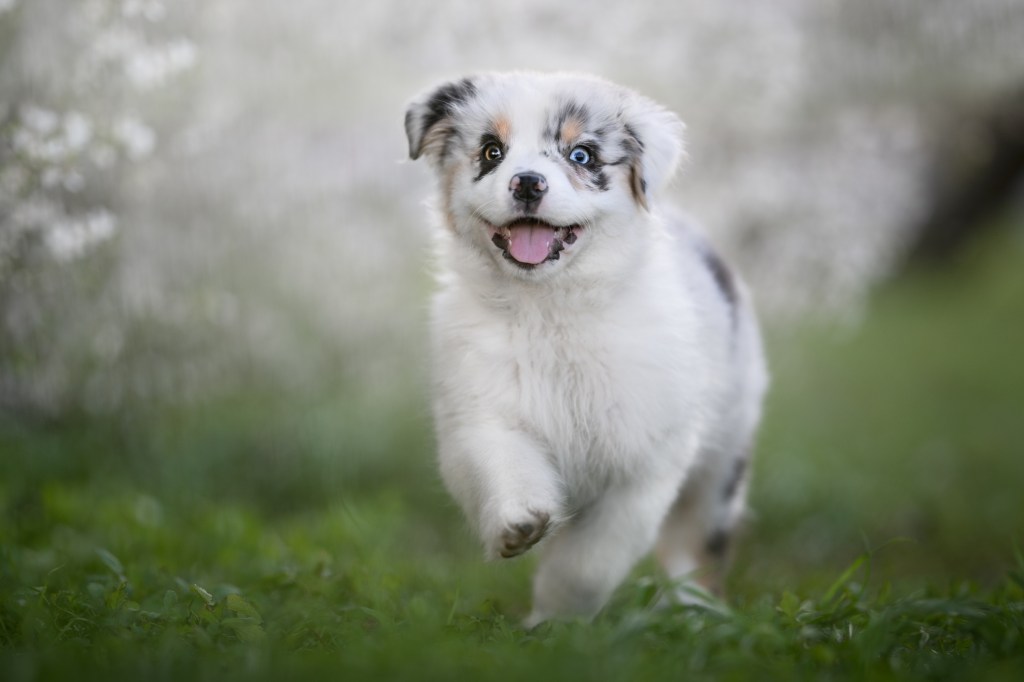
Before you panic, “heterochromia” isn’t an illness. What it means is that your Aussie puppy can have different colored eyes. So one of your Australian Shepherd puppy’s eyes can be a piercing blue, while the other might be a rich golden brown.
Australian Shepherd puppies can have golden, green, blue, brown, and even marbled irises.
Since there are several genes that affect a dog’s eye color, it’s hard to even breed Australian Shepherd puppies for specific eye colors. Undoubtedly, that’s part of the fun of having your own Aussie puppy! Their eyes are always a surprise, and they can even change from puppyhood to adulthood.
While this trait can be absolutely stunning, there’s nothing wrong with having an Australian Shepherd puppy with two of the same beautiful eyes, either.
Some Australian Shepherd puppies are tail-less
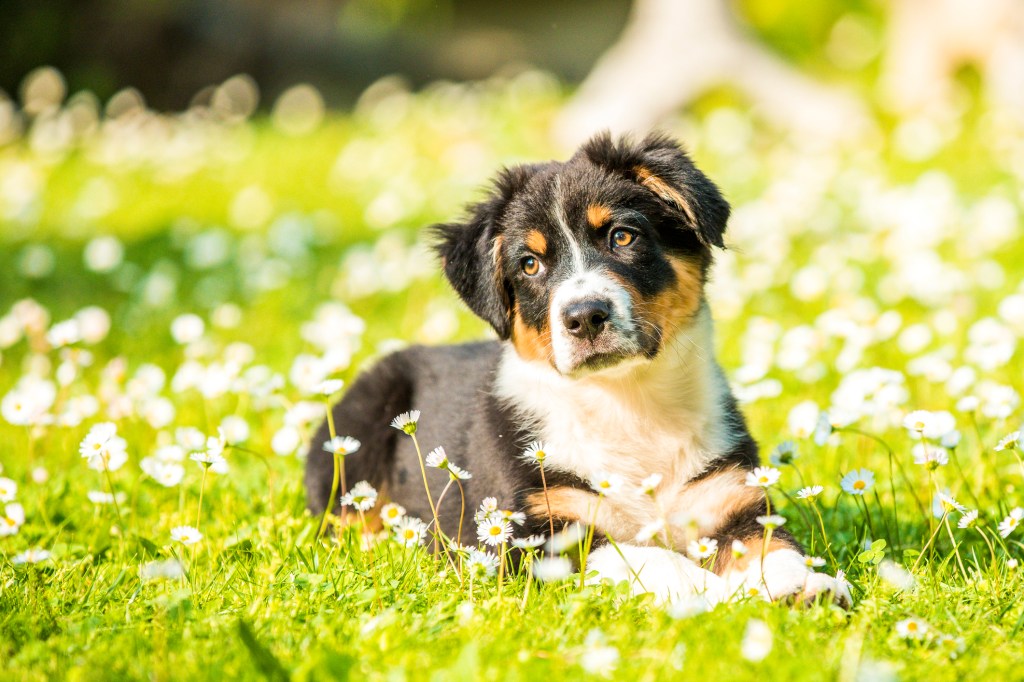
If you’ve ever seen an Australian Shepherd, you might have noticed their tail either looked like a small nub or didn’t even exist. While your first instinct may be to shame the dog parent for tail-docking, that’s not always the reason Aussie puppies don’t have tails.
Roughly one in five Australian Shepherd puppies will be born with the “bobtail” often associated with the breed.
While we here at DogTime love rescues, if you opt to go to a breeder for a bob-tailed Australian Shepherd, a responsible breeder won’t give you any guarantees.
It only takes one copy of the gene, known as T gene mutation C189G, for an Australian Shepherd to have a bobtail at birth. If a puppy is born with two copies of this gene, it can prove fatal to the puppy.
If a breeder were to specifically breed for bobtailed Aussies, they would run the chance of offspring with two copies of the gene.
They make excellent therapy animals
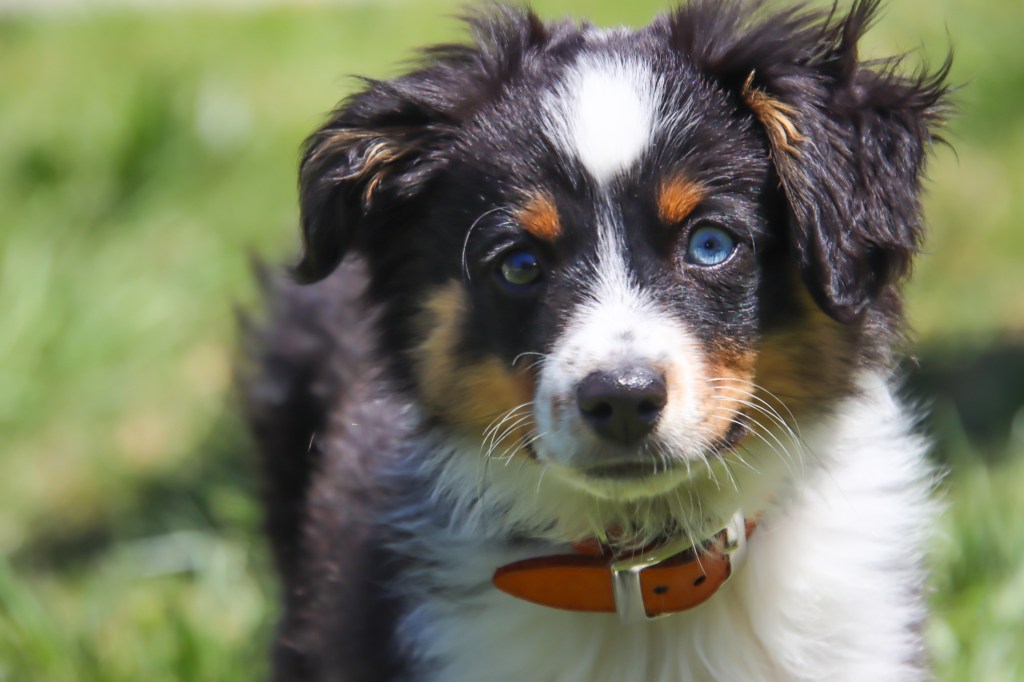
Since Australian Shepherds are so intelligent and love to be put to work, they can make excellent therapy dogs.
Aussies can be trained to be any type of assistance dog, too, whether you’re looking for an emotional support animal or a service animal to help with your day-to-day activities or in times of a medical emergency.
Australian Shepherds are so capable that they’re often trained to be search and rescue dogs, as well.
If you’re planning on getting an Aussie puppy to become a therapy dog, be sure to go to a reputable trainer and speak to your healthcare professionals about making it a reality.
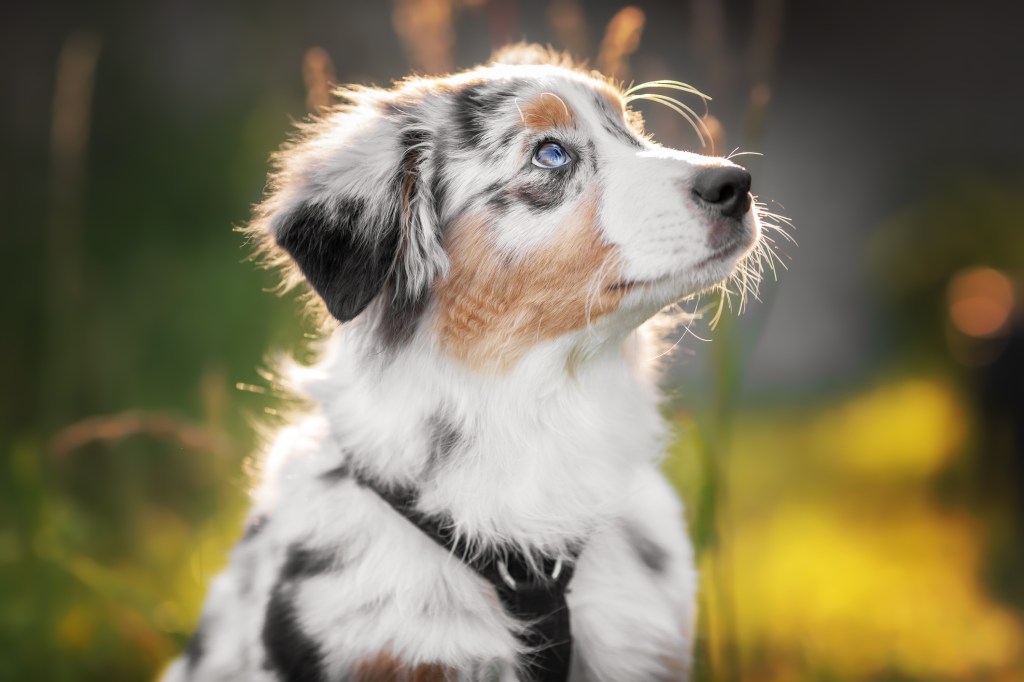
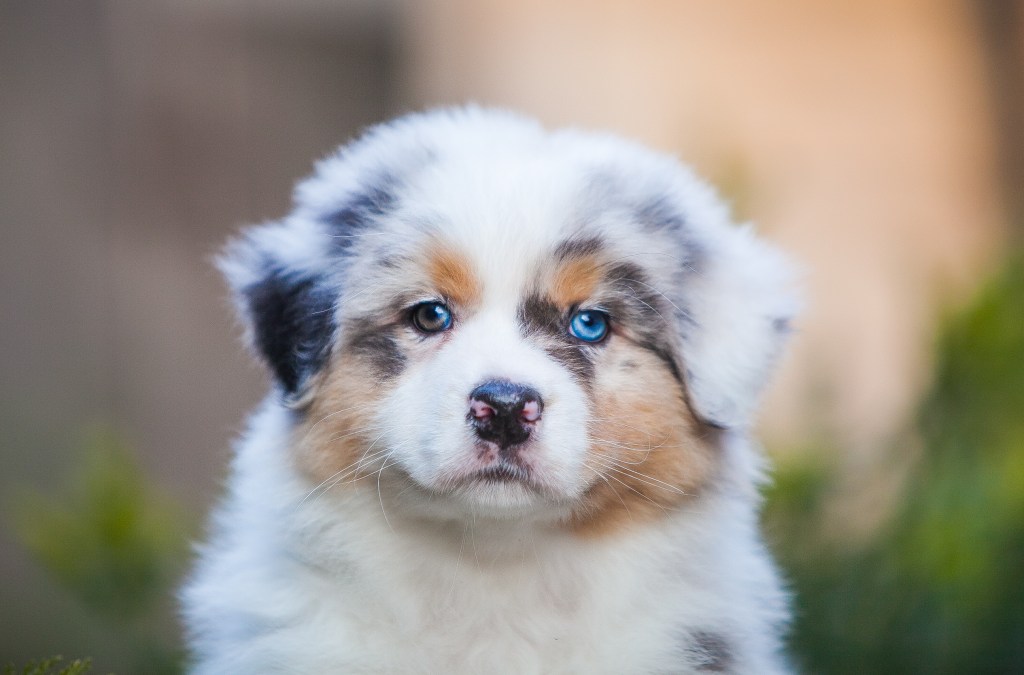
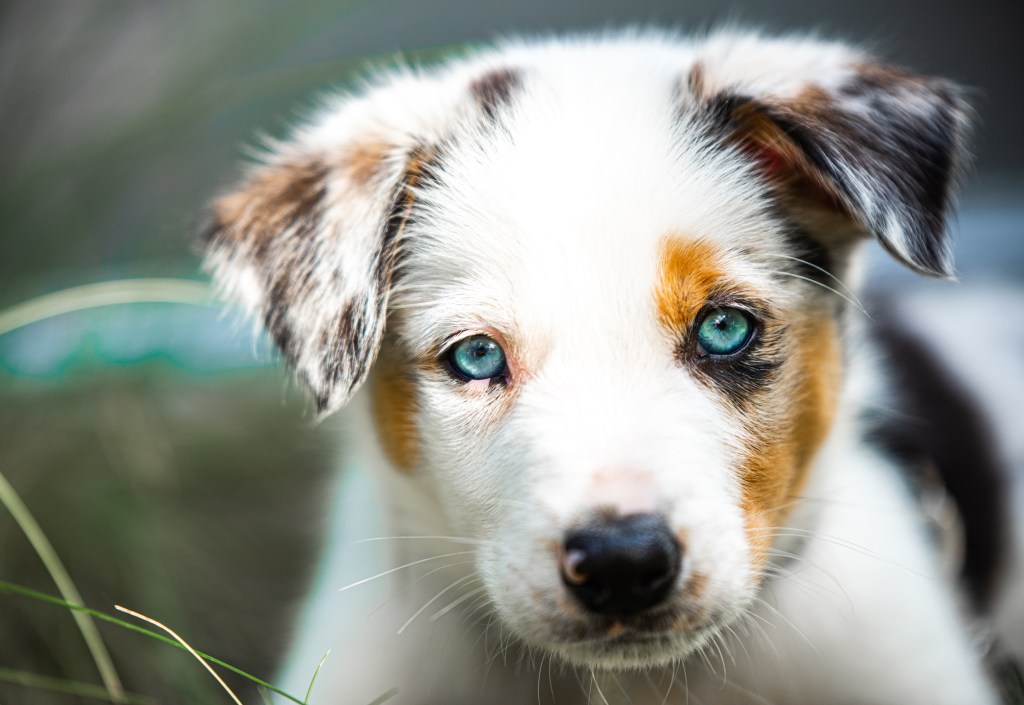
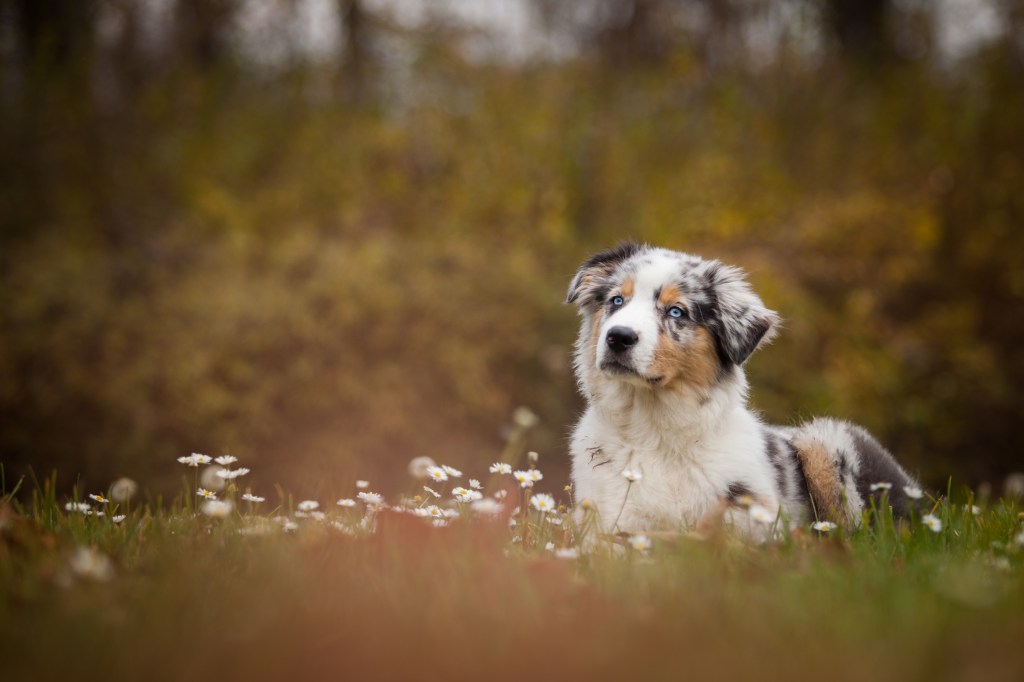

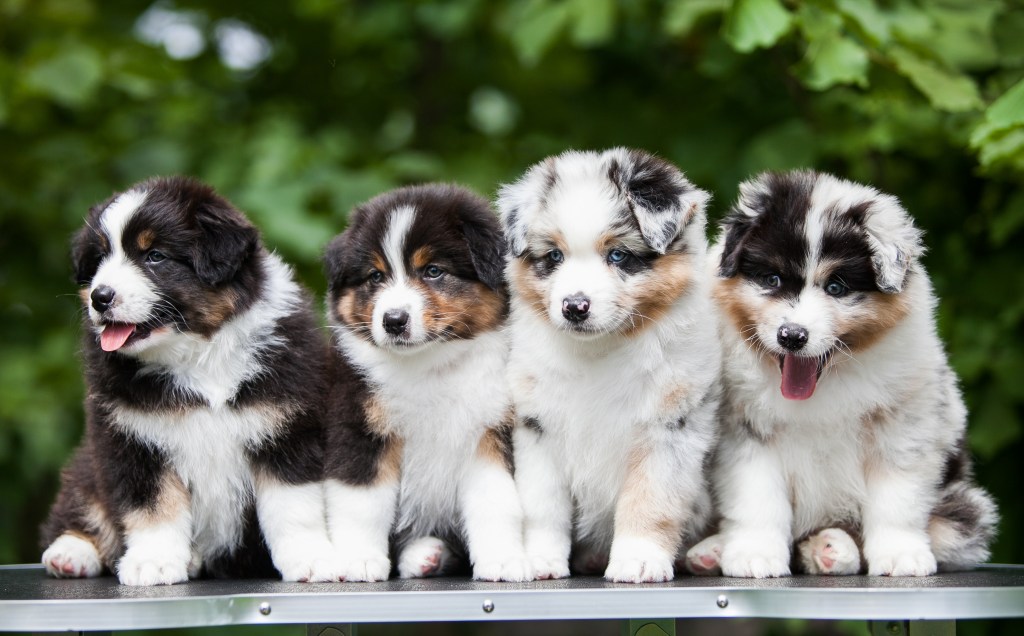
If you decide that an Australian Shepherd puppy is right for you, remember to adopt, don’t shop!
